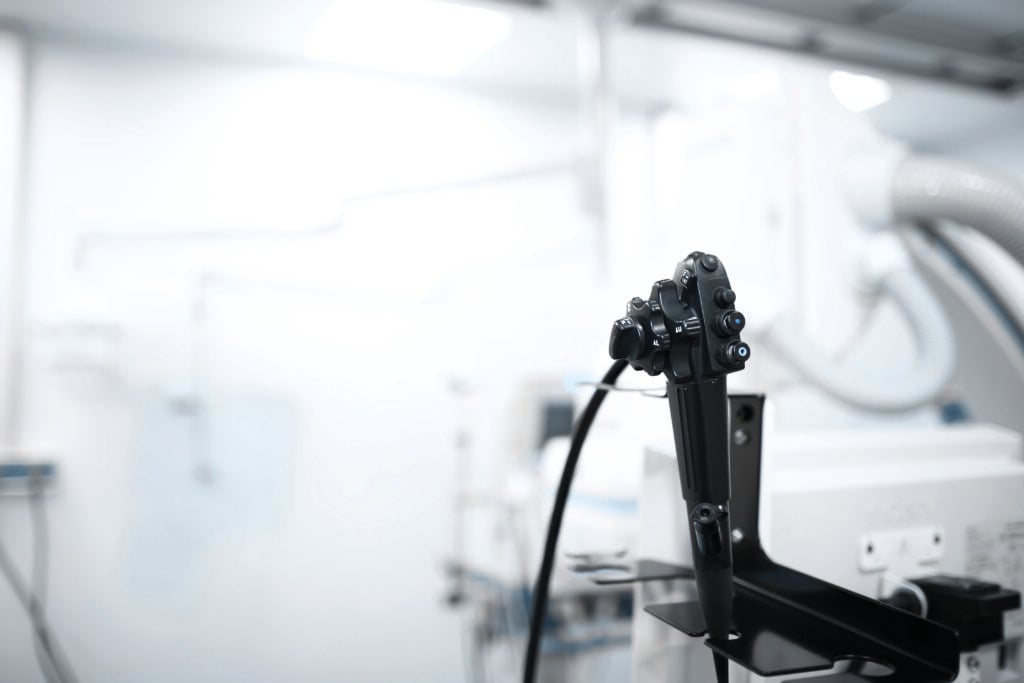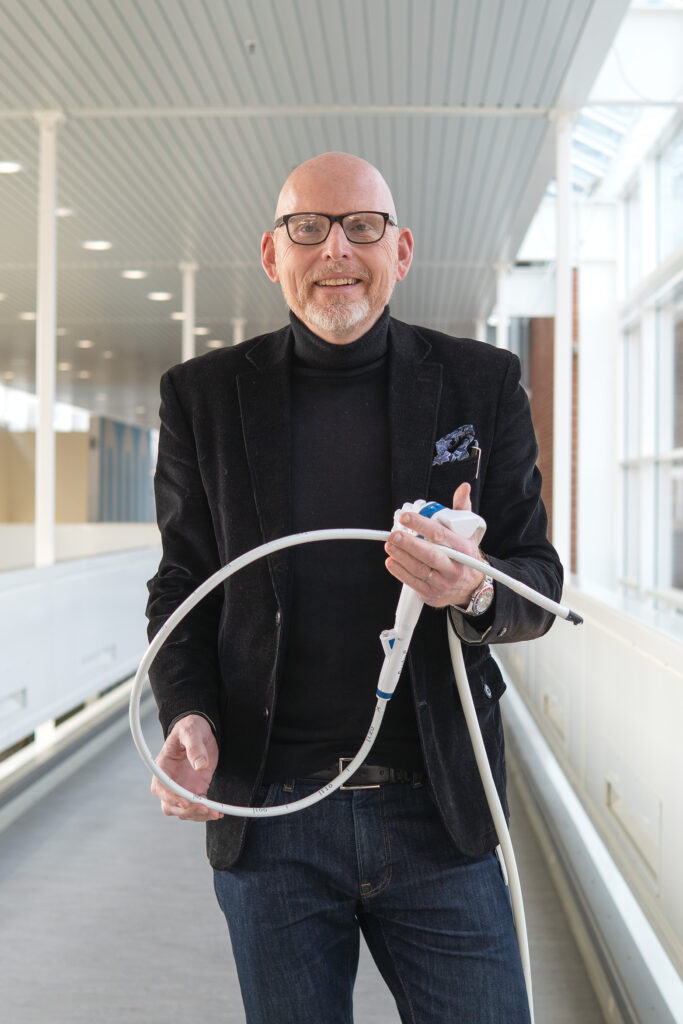
Sustainable Use of Single Use Endoscopes
The healthcare system must reduce its climate footprint, but sustainability cannot be solely measured by CO2 emissions.
This Swedish-Danish project compares reusable and single-use endoscopes in terms of clinical quality, economics, resource use, and climate footprint to identify the most sustainable alternative.
The goal is to contribute to a sustainable healthcare system.

The healthcare system needs to be sustainable.
In Denmark, the healthcare system is responsible for approximately 6% of the country’s total CO2 emissions*. In Sweden, the healthcare system’s impact on the climate is estimated to account for 3% of the country’s total consumption-based emissions*. It is therefore extremely important to actively work on sustainability across the healthcare system.
Today, sustainability is not just a choice, but an absolute necessity that has great significance for global public health. It is crucial that sustainability initiatives go hand in hand with an efficient, high-quality healthcare system, so that the solutions work when sustainability needs to be prioritized in a busy everyday environment.
Hospitals and healthcare facilities’ efforts to contribute to a sustainable healthcare system must therefore be based on research and supported by data, so that we intervene where it truly makes a difference.
In healthcare, sustainability is about more than just CO2 emissions. It is also about the sustainable use of personnel and financial resources, along with an ongoing, unwavering commitment to treatment quality and patient safety. Sustainability must therefore be integrated throughout, and the reduction of the climate footprint must be done responsibly.
*Sources:
Health Care Without Harm, “HEALTH CARE’S CLIMATE FOOTPRINT – Appendix A Tabulated national health care emissions for the 43 WIOD countries,” 2019
Axelsson K, Bell L, Gewecke H. Att se hela bilden – Del 2. Klimatpåverkan från den offentliga sektorns konsumtion: Livsmedel och transporter. SEI working paper. Stockholm: Stockholm Environment Institute; 2018.
The healthcare system and hospitals are major consumers of single-use equipment, which we know contributes to environmental strain and does not support a circular economy. Single-use equipment is a major burden on our climate, and in many places, there is a shift towards alternatives that can be reused in one way or another.
However, there are several reasons why single-use equipment is still used in many parts of the healthcare system, including the fact that it is sterile. This means that the equipment does not need to be cleaned after use, a process that requires large amounts of water and soap containing harsh chemicals, which also contribute to environmental strain. Single-use equipment also eliminates any risks of transmission of multi-resistant bacteria, which, worst of all, can have serious consequences for the patient and can also be costly for the healthcare system.
Thus, there are several factors to consider when looking at sustainability in healthcare – considerations for the patient and healthcare professionals, as well as for the climate and a sustainable economy.
Single-use or reusable?
The SUSUES project aims to develop a model for how tools like life cycle assessments can be used in the healthcare system to optimize sustainable strategies. In the project, the model is developed through a study of single-use endoscopes versus reusable endoscopes, with the goal of answering the question: is it overall more sustainable to use single-use endoscopes or reusable endoscopes?
The Surgical Department at Zealand University Hospital has tested the use of single-use endoscopes for performing endoscopies (minimally invasive procedures and surgeries). However, the standard is to use reusable endoscopes of various types for this purpose.
Endoscopies are performed in several hospital departments where there is a need to examine cavities in the body (mouth, intestines, ears, lungs, urinary tract). This can, for example, be in connection with the diagnosis of colorectal cancer.
To examine the overall sustainability value chain, the project will compare the two endoscopes based on four parameters:
A life cycle assessment will be conducted to uncover the carbon footprint* before, during, and after the performance of endoscopies, using either single-use or reusable endoscopes. The assessment will provide an overview of the total environmental and climate impact caused by the endoscopies.
*Carbon footprint = the total amount of greenhouse gases, primarily CO2, emitted directly or indirectly as a result of human activities.
Patient safety is always the top priority. Therefore, the two types of endoscopes are compared across a large number of performed endoscopies in both Sweden and Denmark. Data is collected from the endoscopies from a quality and patient safety perspective to establish and document the clinical quality of both single-use and reusable endoscopes.
The project will also shed light on the use of resources – both financial and human – to contribute to the efficient use of the limited resources available in the healthcare system, as well as identify potential areas where resources can be reduced for the benefit of patients and healthcare staff.
By observing workflows and procedures in the performance of endoscopies and the handling of endoscopes, as well as conducting interviews with healthcare staff, the project will highlight opportunities and barriers in the use of both single-use and reusable endoscopes from a user perspective.
